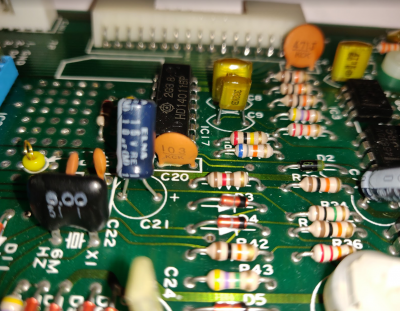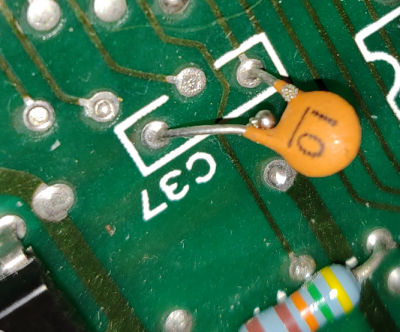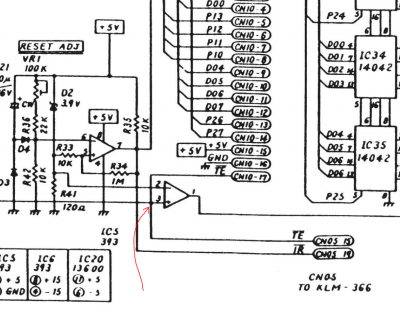MacroDX
Hat ein Bild mit Robotern wo aufm Mond rumlaufen
Hallo Zusammen,
ich bin mit einem netten Dänen in Kontakt, ursprünglich wegen meiner CS15D Mod. Er versucht aber gerade seinen Polysix zum Laufen zu bekommen und ich weiss da erstmal nicht direkt wo gucken.
Der Herr scheint so wie ich ein ambitionierter Bastler zu sein und ich würde ihm gerne helfen.
Daher dachte ich, ich poste seine Fehlerbeschreibung hier und evtl. findet sich ja jemand, der weiterhelfen kann/mag? @fanwander vielleicht, wenn du mal Muse hast? Du kennst den P6 ja glaub ich ziemlich gut
When I power on the Polysix it will start of with a sound increasing in volume. 2 presses on Hold or 1 press on Arpeggiator will silence it. After that you can play and edit the sound. Hold will function as it is supposed to.
When I hit the arpeggiator button it will start immediately without any keys pressed. And it seems to me that it is playing the same notes every time. But you can change the notes that it play by pressing keys, but it seems to me that the same memorized notes will still be a part of the mix. Latch on does make a difference as it will keep playing the pressed keys along with the memorized notes I guess...
So I am suspecting that the functionality to hold the notes to be arpeggiated in memory are faulty or something more closely related to the arpeggiator.
Aus der Hüfte raus würde ich ein fehöerhaftes Address Latch/Multiplexer vermuten, hab aber erstmal keine Idee welches man sich da mal anschauen müsste.
Danke schonmal für eure Mithilfe
ich bin mit einem netten Dänen in Kontakt, ursprünglich wegen meiner CS15D Mod. Er versucht aber gerade seinen Polysix zum Laufen zu bekommen und ich weiss da erstmal nicht direkt wo gucken.
Der Herr scheint so wie ich ein ambitionierter Bastler zu sein und ich würde ihm gerne helfen.
Daher dachte ich, ich poste seine Fehlerbeschreibung hier und evtl. findet sich ja jemand, der weiterhelfen kann/mag? @fanwander vielleicht, wenn du mal Muse hast? Du kennst den P6 ja glaub ich ziemlich gut
When I power on the Polysix it will start of with a sound increasing in volume. 2 presses on Hold or 1 press on Arpeggiator will silence it. After that you can play and edit the sound. Hold will function as it is supposed to.
When I hit the arpeggiator button it will start immediately without any keys pressed. And it seems to me that it is playing the same notes every time. But you can change the notes that it play by pressing keys, but it seems to me that the same memorized notes will still be a part of the mix. Latch on does make a difference as it will keep playing the pressed keys along with the memorized notes I guess...
So I am suspecting that the functionality to hold the notes to be arpeggiated in memory are faulty or something more closely related to the arpeggiator.
Aus der Hüfte raus würde ich ein fehöerhaftes Address Latch/Multiplexer vermuten, hab aber erstmal keine Idee welches man sich da mal anschauen müsste.
Danke schonmal für eure Mithilfe


 .
.

